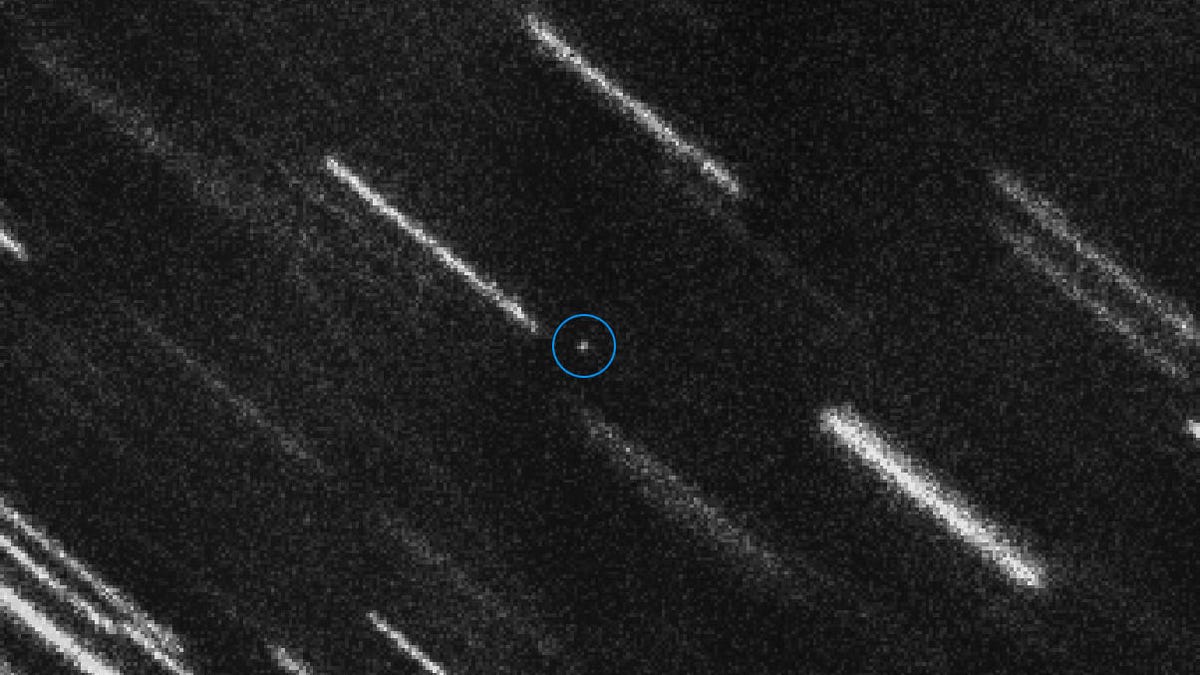How to watch a house-sized asteroid buzz by Earth
Asteroid 2012 TC4 is set to whiz by us at a distance that's safe but still uncomfortably close.

Near Earth Asteroid 2012 TC4 is surrounded by a blue circle in this ESO image.
A cosmic close call is set to occur high above Earth late Wednesday night (Pacific time) when an asteroid the size of a house passes almost as close to us as some of the communications satellites that make it possible to read this story around the world.
Asteroid 2012 TC4 is back for another visit almost four years to the day since it was seen for the first time zipping by our planet. This time there's a few ways you can watch the space rock's fly-by as it happens.
A week after being discovered in October 2012, TC4 passed us at a distance of 58,900 miles (94,800 kilometers). This time it will come closest at approximately 10:41 p.m. PT Wednesday (5:41 UTC Thursday morning) when it slices by safely at a distance of about 31,000 miles (50,000 kilometers). For reference, satellites in geosynchronous orbit are at an altitude of about 22,236 miles (35,786 km). The asteroid will actually pass closer than some satellites in more elliptical orbits, like NASA's Interstellar Boundary Explorer.
Observatories around the world have been working to track the asteroid over the past several weeks, using it as an exercise to test the early warning network that would be used should another future space rock pose a real threat of impact.
For backyard observers to catch a glimpse of 2012 TC4, you'll need a telescope with at least an 8-inch aperture and dark skies, according to Sky and Telescope.
"Best viewing prospects for North America come... on October 11th, as 2012 TC4 glides southward through the constellations Capricornus, Microscopium and Sagittarius," writes David Dickinson. "South American observers get the very best view, as 2012 TC4 heads sunward in the predawn hours of October 12th."
To help locate the asteroid, which should be approaching fast enough that you will actually see it moving in your viewfinder, use this handy online tracker for reference on its current position:
Asteroid 2012 TC4 is now just 3 million Km away from Earth, and approaching! Track it on TheSkyLive: https://t.co/uyLNCLS2eD pic.twitter.com/si1lIDkjoy
— TheSkyLive (@TheSkyLive) October 6, 2017
If the skies are cloudy or just not dark enough where you are, there's a few options for watching the 2012 TC4 fly-by: online via the Slooh Observatory or below from the Virtual Telescope Project.
If you miss it, don't worry. This rock will make many more passes in the future, all of them safe until at least 2050. So just exhale and enjoy the show.
Crowd Control: A crowdsourced science fiction novel written by CNET readers.
Solving for XX: The tech industry seeks to overcome outdated ideas about "women in tech."

